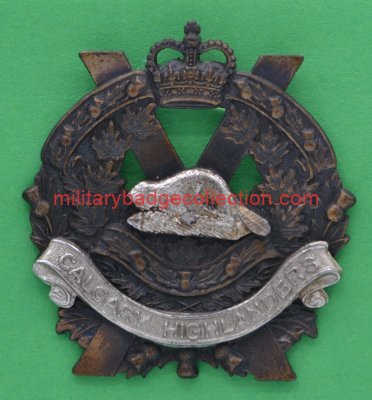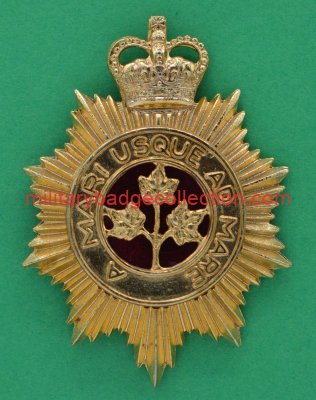157: Canadian Infantry Badges 1953 – 1973 part 1:3
Canadian Infantry Badges 1953 – 1973 part 1
The Canadian Guards
The Canadian Guards was an infantry regiment of the Canadian Army that served in the same role as the five regiments of Foot Guards in the British Army. The regiment was formed in 1953 by the redesignation of four separate battalions:
- 3rd Battalion, The Royal Canadian Regiment – 1st Battalion
- 3rd Battalion, Princess Patricia’s Canadian Light Infantry – 2nd Battalion
- 1st Canadian Infantry Battalion – 3rd Battalion
- 2nd Canadian Infantry Battalion – 4th Battalion
History
The regiment was created when it was decided that the composite 1st and 2nd Canadian Infantry Battalions that were created for the 27th Canadian Infantry Brigade should not be given a specific territorial identity. The Guards would be able to recruit nationally, and the chief of staff of the Canadian Army, Lieutenant General Guy Simonds, said there was nothing wrong with infusing the standard of the Household Brigade into the Canadian Army
A year later, a militia component was added, when the Governor General’s Foot Guards and Canadian Grenadier Guards became the 5th and 6th Battalions.
Throughout their existences the regular components of the Canadian Guards maintained a regimental band as well as pipes and drums. In common with the pipes and drums of the Scots Guards in the British Army, pipers of the Canadian Guards were granted the privilege to wear the British Royal Family’s household tartan – the Royal Stuart tartan. The Canadian Guards wore a white-over-red plume on the left side of their bearskins. Ceremonial dress uniform is similar to those worn by The Canadian Grenadier Guards.
The 3rd and 4th Battalions were disbanded in 1957 to make way for the formation of Regular Army regiments of the 8th Canadian Hussars (Princess Louise’s) and The Fort Garry Horse, leaving the 1st and 2nd Battalions and the Regimental Depot in the Regular Force. In the late 1960s, as part of a reorganization of the Canadian Army, it was decided to disband the Canadian Guards. The 1st Battalion was disbanded on 1 October 1968, and the 2nd Battalion was reduced to nil strength on 6 July 1970 (its personnel and equipment going to the new 3rd Battalion, The Royal Canadian Regiment). The role of Household Troops was then passed to the two surviving militia units, which resumed their separate identities in 1976. Some members were re-assigned to the Canadian Airborne Regiment.
Colonel Strome Galloway, who commanded the Guards’ 4th Battalion from 1955 to 1957 and was the first and last regimental lieutenant-colonel, believed that the disbanding of the Guards was a “political decision” by powerful “francophone” elements. “Our crime,” Galloway wrote, “was that we were ‘too British’ in uniform and character to pass muster with the Francophone hierarchy which dominated the Defence Department at the time. The Unification program was the official excuse, but the program itself was partly a gimmick to ‘Americanize’ the Canadian forces and eliminate, as far as possible, the British traditions of the past.”
Deployments
- Korea 1953–1954
- West Germany 1957–1962 – NATO assignment
- Cyprus 1964–1966 – UN mission



